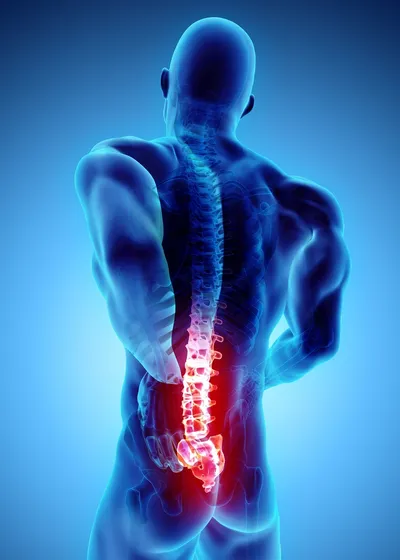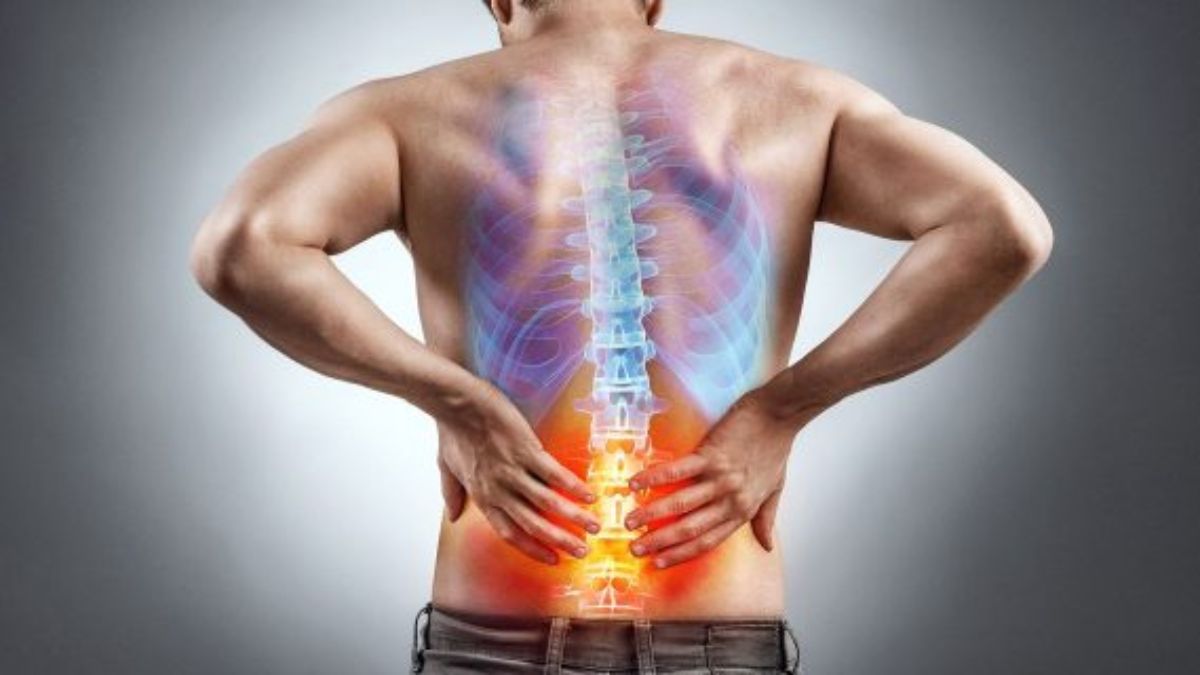
Back Pain, often referred to as lumbago, is a common and distressing condition that affects a significant portion of the population at some point in their lives. It primarily refers to discomfort in the lower back, which can range from a dull ache to sharp, debilitating pain. Lumbago can be acute, lasting for a few days to a few weeks, or chronic, persisting for several months or even years. The pain can stem from a variety of causes, including muscle strain, ligament sprains, herniated discs, degenerative disc disease, or spinal stenosis.
One of the most prevalent causes of lumbago is muscle strain, often resulting from improper lifting, sudden movements, or prolonged periods of sitting or standing in awkward positions. This type of strain leads to inflammation and discomfort in the lower back muscles. Another common issue is a herniated disc, where the soft inner material of a spinal disc protrudes through a tear in the outer layer, pressing on nearby nerves and causing pain that may radiate down the legs. Degenerative disc disease involves the gradual wear and tear of the spinal discs, which can lead to reduced disc height, loss of spinal flexibility, and increased pressure on the vertebrae. Spinal stenosis, the narrowing of the spinal canal, can also contribute to back pain by compressing the spinal cord and nerves.
Symptoms of lumbago can vary but typically include localized lower back pain, stiffness, and reduced range of motion. Some individuals may experience pain that radiates down the legs, a condition known as sciatica. This radiating pain often results from nerve compression or irritation. Lumbago can also be accompanied by muscle spasms, which can further restrict movement and increase discomfort.
Diagnosis of the underlying cause of back pain usually involves a combination of medical history, physical examination, and imaging studies such as X-rays, MRIs, or CT scans. Treatment strategies often start with conservative measures, including rest, physical therapy, and over-the-counter pain medications. Physical therapy focuses on strengthening the muscles supporting the spine, improving flexibility, and promoting proper posture to prevent future episodes. For more severe cases or when conservative treatments fail to provide relief, more advanced interventions such as corticosteroid injections, nerve blocks, or even surgical procedures may be considered.
Preventive measures play a crucial role in managing and reducing the risk of lumbago. Maintaining a healthy weight, engaging in regular exercise, practicing good posture, and using proper techniques when lifting or bending can all help prevent the onset of back pain. Additionally, ergonomic adjustments to workstations and avoiding prolonged periods of inactivity can contribute to overall spinal health.

Back pain, or lumbago, refers to discomfort, aching, or pain experienced in the back, typically in the lower region known as the lumbar area. This condition is a widespread issue that can affect individuals of all ages and backgrounds, often resulting from a variety of causes ranging from muscle strain to more complex spinal disorders.
Back pain can manifest in several ways, including sharp or dull pain, stiffness, and reduced mobility. It can occur suddenly (acute) due to an injury or strain, or develop gradually over time (chronic) as a result of ongoing stress or degenerative changes. The pain might be localized to a specific area or radiate to other parts of the body, such as the legs or buttocks.
Back Pain can arise from a variety of sources, each contributing to discomfort and impairment in different ways:
Muscle and Ligament Strain:
Herniated Disc:
Degenerative Disc Disease:
Spinal Stenosis:
Osteoarthritis:
Scoliosis:
Infections and Tumors:
Each cause of back pain may require specific diagnostic and therapeutic approaches to effectively manage and alleviate symptoms.
Back pain can arise from a variety of sources, each contributing to discomfort and impairment in different ways:
Description: Often caused by lifting heavy objects, sudden movements, or prolonged poor posture.
Impact: Leads to inflammation and pain in the back muscles or ligaments, typically causing acute discomfort.
Description: Occurs when the soft inner material of a spinal disc pushes through its outer layer, irritating nearby nerves.
Impact: Can cause localized pain as well as radiating pain, numbness, or weakness in the legs or arms.
Description: Involves the gradual breakdown of spinal discs due to aging or wear and tear.
Impact: Results in reduced disc height and spinal flexibility, leading to pain and stiffness.
Description: The narrowing of the spinal canal that compresses the spinal cord and nerves.
Impact: Causes pain, numbness, or weakness in the back and legs, often worsening with activity.
Description: A type of arthritis that affects the spinal joints, leading to the deterioration of cartilage.
Impact: Results in pain, stiffness, and reduced range of motion in the affected spinal joints.
Description: An abnormal curvature of the spine that can develop in childhood or adulthood.
Impact: Leads to uneven stress on the spine, potentially causing pain and postural changes.
Description: Rare causes of back pain, including infections like discitis or tumors affecting spinal structures.
Impact: Can cause localized or diffuse pain and may require more intensive treatment.
Each cause of back pain may require specific diagnostic and therapeutic approaches to effectively manage and alleviate symptoms.
Back pain can present in a variety of ways, and its symptoms can range from mild discomfort to severe, debilitating pain. Here are some common symptoms associated with back pain:
Localized Pain:
Description: Pain confined to a specific area of the back, such as the lower, middle, or upper back.
Nature: Can be a dull ache, sharp pain, or a burning sensation, often exacerbated by movement or specific activities.
Radiating Pain:
Description: Pain that spreads from the back to other areas, such as the buttocks, legs (sciatica), or arms.
Nature: Often indicates nerve involvement, such as from a herniated disc pressing on a nerve root.
Stiffness:
Description: Reduced flexibility and difficulty moving the back, especially after periods of inactivity or upon waking.
Nature: Can make bending, twisting, or standing up straight challenging.
Muscle Spasms:
Description: Sudden, involuntary contractions of the muscles in the back.
Nature: Can cause sharp pain and restrict movement, sometimes lasting for several minutes or recurring intermittently.
Numbness and Tingling:
Description: Sensations of numbness, tingling, or a “pins and needles” feeling in the back or extremities.
Nature: Often associated with nerve compression or irritation, such as from a herniated disc or spinal stenosis.
Weakness:
Description: Muscle weakness in the back or limbs.
Nature: Can affect the ability to perform daily activities, like lifting objects or walking.
Pain with Movement:
Description: Increased pain with specific movements, such as bending, lifting, or twisting.
Nature: Indicates that certain actions exacerbate the underlying issue causing the pain.
Chronic Pain:
Description: Persistent pain that lasts for three months or longer.
Nature: Can fluctuate in intensity and may be accompanied by periods of relief.
Postural Pain:
Description: Pain that worsens with prolonged sitting, standing, or other postures.
Nature: Often related to poor posture or ergonomics, leading to muscle fatigue and strain.
Reduced Range of Motion:
Description: Limited ability to move the spine in different directions.
Nature: Can be due to pain, stiffness, or structural issues affecting the spine.
Pain with Touch:
Description: Tenderness or pain when pressure is applied to specific areas of the back.
Nature: Can indicate inflammation or muscle strain in the affected region.
Back pain, with its myriad causes and symptoms, can significantly impact quality of life. Understanding the potential sources of pain, such as muscle strain, herniated discs, and spinal conditions, is crucial for effective management and treatment. Symptoms can range from localized pain and stiffness to radiating pain and muscle weakness, each requiring specific diagnostic and therapeutic approaches. If you are experiencing persistent or severe back pain, consulting a healthcare professional is essential.
For those in need of specialized care, seeking the expertise of a neurosurgeon in Indore or a neurologist in Indore, such as Dr. Amit Deora, can be a pivotal step towards relief and recovery. Dr. Amit Deora’s extensive experience in treating spinal issues ensures that patients receive comprehensive, individualized care. Early diagnosis and appropriate treatment can alleviate pain, improve function, and enhance overall well-being.